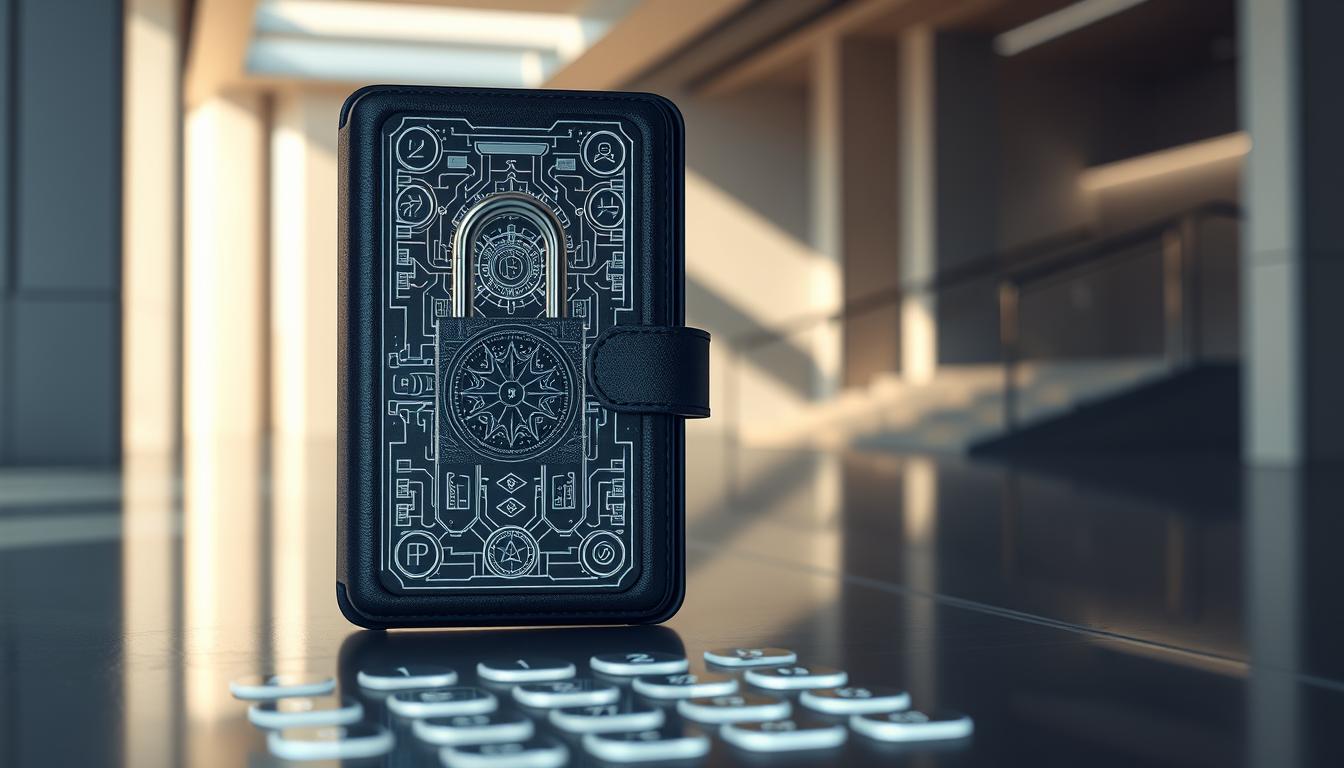Now Reading: Understanding Blockchain Patent Technology Intellectual Property
- 01
Understanding Blockchain Patent Technology Intellectual Property
Understanding Blockchain Patent Technology Intellectual Property

The digital world is constantly evolving, bringing new and powerful tools to the forefront. One such innovation is reshaping how we think about ownership and security for digital creations. This guide dives into the vital topic of protecting these modern inventions.
We will explore how legal rights, specifically patents, apply to advancements in distributed ledger systems. This area is complex and rapidly changing across the globe. Understanding it is crucial for inventors, businesses, and legal experts alike.
Our journey will cover the current landscape of these legal filings. You will learn about the process of securing rights and the challenges involved. We will also look at real-world examples to show how these principles work in practice.
Key Takeaways
- Grasp the fundamental connection between digital ledger systems and legal protection mechanisms.
- Learn how new systems are transforming the management of creative and inventive rights.
- Discover the current trends in global filings and grants for these types of inventions.
- Identify both the opportunities and hurdles for those navigating this legal space.
- Gain practical strategies for obtaining and managing a portfolio of protected assets.
- Understand the legal frameworks that govern innovative digital developments.
Introduction to Blockchain Patent Technology Intellectual Property
A revolutionary approach to safeguarding digital creations is emerging through distributed ledger systems. This method transforms how we manage and protect inventive rights.
Definition and Overview
Distributed ledger systems offer a fresh perspective on legal protection frameworks. They create permanent, transparent records of ownership.
This innovation began with digital currencies but now serves broader purposes. Its tamper-resistant nature makes it ideal for documenting rights.
The Importance of IP in Blockchain Innovation
Protecting inventive work provides crucial advantages in today’s competitive landscape. Exclusive rights allow creators to commercialize their breakthroughs.
The decentralized nature of these systems solves long-standing management challenges. It reduces reliance on middlemen while ensuring transparency.
Understanding this relationship helps innovators navigate complex legal environments. Proper protection attracts investment and prevents unauthorized use.
The entire industry recognizes the need for robust strategies. This fosters continued growth and market development.
Fundamental Concepts of Blockchain and Intellectual Property
To grasp how legal rights apply to modern digital inventions, we must first understand the tools and the rules. This section breaks down the core components of distributed systems and the established principles of legal protection.
Blockchain Technology Essentials
At its heart, a distributed ledger system functions as a shared, unchangeable database maintained by a network of computers. Every participant holds an identical copy of the records. This setup creates a transparent and tamper-resistant history of events.
Cryptography secures the data within each block, linking them together in a chain. Consensus protocols ensure all copies of the ledger agree on new entries. This eliminates the need for a central authority to validate information.
There are different types of these networks, like public, private, and permissioned blockchains. Each architecture offers varying levels of access and control. This choice directly impacts how one might secure associated inventions.
Core Principles of Intellectual Property Rights
Intellectual property law protects different kinds of creations. Patents cover new and useful inventions, while trademarks shield brand names and logos. Copyrights guard original artistic and literary works, and trade secrets preserve confidential business information.
Applying these long-standing legal frameworks to decentralized systems requires careful thought. The unique nature of the software and its distributed architecture presents new scenarios. Understanding both the technical and legal sides is key to effective protection.
This interplay opens novel opportunities for managing assets. Software-based solutions can help track ownership and automate agreements. This foundational knowledge prepares you for the strategic discussions ahead.
Blockchain in Intellectual Property: Core Benefits and Applications
Modern creators now have access to powerful tools that revolutionize traditional approaches to safeguarding their work. These systems provide transparent tracking and automated enforcement mechanisms. The benefits extend across the entire creative industry.

Securing Trademarks, Patents, and Copyrights
Distributed ledger networks create unchangeable timestamps for creative works. This provides undeniable proof of ownership at specific moments. The system’s transparency helps resolve disputes over infringement quickly.
Traditional assets can become digital tokens with unique identification. This conversion simplifies tracking and storage across global markets. The approach offers enhanced security against unauthorized use of protected materials.
Leveraging Smart Contracts for Licensing and Royalty Distribution
Smart contracts automate licensing agreements through pre-programmed conditions. These self-executing contracts eliminate manual intervention in payment processing. Royalty distributions happen instantly when usage conditions are met.
The technology monitors asset usage across digital platforms automatically. Payments transfer to rights holders in real-time without delays. This streamlined approach reduces administrative costs significantly.
| Management Aspect | Traditional Approach | Blockchain Solution |
|---|---|---|
| Proof of Creation | Manual documentation | Immutable timestamp |
| Royalty Payments | Manual processing | Automated distribution |
| Ownership Tracking | Centralized databases | Decentralized network |
| Dispute Resolution | Lengthy legal processes | Transparent data verification |
These applications demonstrate how distributed systems transform asset management. The technology supports faster transactions and better protection for creative works. Many sectors now explore these innovative applications.
Exploring “Blockchain patent technology intellectual property” in Practice
Practical examples often provide the clearest window into complex systems. This section examines how leading companies implement these principles in real-world scenarios.

Real-Life Case Studies: Blockai, Verisart, and Bernstein
Blockai serves writers and artists with innovative protection tools. The platform uses immutable timestamps to document creative works as they develop.
This approach establishes undeniable proof of authorship. It helps creators safeguard their work from unauthorized use over time.
Verisart demonstrates another powerful application in the art market. The company provides secure digital certificates for artworks and collectibles.
These certificates enable artists to convert creations into verifiable digital assets. The system makes authentication straightforward for buyers and sellers.
Bernstein offers a comprehensive solution for innovation tracking. Its certified version history creates detailed digital trails of development processes.
Users can register assets of any size or format to prove existence and ownership. This real-time documentation reduces the number of ownership disputes significantly.
These companies show how abstract concepts become concrete systems. Each example addresses longstanding challenges in creative rights management.
Innovative Patent Strategies through Blockchain Technology
Successful legal protection begins with identifying the technical areas that offer the strongest patent opportunities. These distributed system inventions must demonstrate concrete improvements to overcome abstractness rejections.
Focusing on measurable technical advantages increases approval chances significantly. This strategic approach helps companies build valuable asset portfolios.
Technical Innovations Driving Patent Applications
Data structure and encryption methods represent prime candidates for protection. Innovations like sharding techniques and zero-knowledge proofs solve real technical problems.
They provide enhanced security, better scalability, and improved transaction throughput. These measurable benefits make them strong candidates for legal exclusivity.
Consensus mechanisms and smart contract architectures also offer patent opportunities. Novel approaches to proof systems and execution environments qualify when they deliver performance gains.
| Innovation Type | Technical Improvement | Example |
|---|---|---|
| Data Structures | Enhanced security & scalability | Merkle tree modifications |
| Consensus Protocols | Reduced energy consumption | Novel proof-of-stake variants |
| Smart Contract Systems | Secure multi-party computations | Optimized execution environments |
| Hardware Solutions | Improved thermal performance | Application-specific integrated circuits |

Navigating the Patent Application Process Effectively
Thorough documentation of technical implementation details is crucial during the patent application process. Companies should anticipate stricter examination standards as the software matures.
Drafting claims that emphasize concrete technical improvements rather than abstract concepts increases allowance likelihood. This approach works across multiple jurisdictions over time.
Understanding these strategic considerations helps innovators protect their breakthroughs effectively. The evolving landscape of distributed ledger technologies requires adaptive protection strategies.
Legal and Regulatory Considerations in Blockchain Patents
The intersection of modern computing systems with traditional legal protections presents unique regulatory challenges worldwide. Court rulings from recent years have established critical standards for what qualifies as protectable innovation.
Impact of the Alice Decision on Patent Eligibility
The Alice Corp. v. CLS Bank decision fundamentally changed patent law. It established that claimed inventions must offer more than abstract ideas.
This ruling creates significant hurdles for many patent applications involving distributed systems. Basic economic practices implemented through software often fail the eligibility test.
Recent cases demonstrate this standard in action. The Rady case rejected mapping physical items to ledger records as unpatentable. Another application was denied for insufficient technical structure.
| Case Name | Key Issue | Outcome |
|---|---|---|
| Alice Corp. v. CLS Bank | Abstract idea implementation | Established patent eligibility standard |
| Rady v. Boston Consulting | Physical item mapping | Rejected for lacking technical improvement |
| In re: Haim S. Raiz | Indefinite claims structure | Application denied under § 112(b) |

International Patent Laws and Emerging Standards
Different jurisdictions apply varying standards for patent eligibility. This complexity requires strategies that address requirements across global markets.
Patent offices worldwide are developing harmonized examination practices. These emerging standards aim to reduce uncertainty for inventors and companies.
Understanding these legal frameworks is essential for avoiding costly rejections. Proper preparation helps navigate the evolving landscape of digital asset protection.
Strategies for Managing and Protecting Blockchain IP Assets
A multi-layered protection strategy forms the foundation of successful intellectual asset preservation. This approach combines technical safeguards with legal frameworks to create comprehensive coverage.
Effective asset management begins with selecting the right distributed ledger platform. Companies must choose systems that align with their business goals and technical capabilities.
Best Practices for Documentation and Registration
Thorough documentation establishes clear ownership chains and supports future legal filings. Maintain detailed records of development processes, technical specifications, and inventor contributions.
Implement robust security measures to protect sensitive information. Use encryption, hashing, and access controls to prevent unauthorized disclosure during development.
A diversified portfolio provides the strongest protection against various threats. This quilt-like approach combines different legal instruments for comprehensive coverage.
| Protection Component | Traditional Approach | Modern Strategy | Key Advantage |
|---|---|---|---|
| Proof of Ownership | Paper documentation | Digital timestamping | Immutable verification |
| Security Measures | Physical storage | Cryptographic protection | Enhanced privacy |
| Portfolio Management | Single focus | Multi-component | Risk distribution |
| Stakeholder Collaboration | Limited partnerships | Integrated networks | Comprehensive coverage |
Regular portfolio reviews ensure protection strategies evolve with technological advances. This proactive management reduces litigation risks over time.
Collaboration with legal experts and technical professionals strengthens overall asset protection. This integrated approach helps companies navigate complex legal landscapes effectively.
Integrating Smart Contracts and Distributed Ledger Innovations in IP Law
Automation is reshaping the legal landscape for creative rights management. Self-executing code and decentralized record-keeping introduce new efficiencies.
These tools transform how agreements are formed and enforced. They move processes from paper-based systems to digital, transparent networks.
Role of Smart Contracts in Modern Licensing Agreements
Smart contracts are lines of code that run automatically. They execute terms when specific, predefined conditions are met.
This automation covers the entire agreement lifecycle. It handles negotiation, compliance checks, and even renewals.
Royalty distribution becomes instant and precise. Payments transfer to rights holders as soon as usage is recorded.
Technical Advantages of Distributed Ledger Systems
Distributed ledger architectures offer significant technical advantages. They create an unchangeable timestamp for every transaction.
This provides a verifiable audit trail for all licensing activities. Authorized participants on the network can view this data.
Trust increases because the record is transparent and shared. The system reduces reliance on central authorities for verification.
| Management Task | Traditional Method | Modern Solution |
|---|---|---|
| Agreement Execution | Manual enforcement | Automated smart contracts |
| Record Keeping | Centralized database | Distributed ledger |
| Payment Distribution | Slow, batch processing | Real-time transactions |
| Dispute Evidence | Fragmented documents | Immutable data trail |
Overcoming Challenges in Patenting Blockchain Innovations
Companies seeking protection for their digital ledger breakthroughs often encounter unexpected obstacles during the application process. These hurdles require careful navigation and strategic responses to secure valuable rights.
Common Rejection Grounds and Remedies for Patent Claims
Applications frequently face rejections based on prior art showing lack of novelty. Examiners may also question whether claims are sufficiently supported by detailed descriptions.
Timing creates additional complications. Examination typically occurs years after filing, under potentially changed standards. Applicants must anticipate stricter future requirements.
Effective responses involve amending claims to emphasize concrete technical improvements. Providing additional evidence of non-obviousness helps distinguish inventions from abstract ideas.
| Rejection Type | Common Issue | Effective Solution |
|---|---|---|
| Prior Art | Lack of novelty | Distinguish from existing software |
| Written Description | Insufficient detail | Add implementation variations |
| Abstract Idea | Alice framework | Focus on technical advantages |
| Timing | Changing standards | Anticipate future guidance |
Addressing Security and Infringement Concerns
Security extends beyond the network to real-world enforcement challenges. The borderless nature of distributed systems complicates jurisdictional oversight.
Infringement detection becomes difficult across different legal systems. Companies need monitoring systems that track unauthorized use across network transactions.
Legal uncertainty remains a persistent issue as courts refine standards. Comprehensive strategies combine protection with contractual safeguards and technological measures.
Conclusion
The landscape for protecting digital inventions is undergoing a profound shift. Distributed ledger systems offer a new path for managing creative rights with greater clarity and efficiency.
Their power lies in creating unchangeable records and automating agreements. This brings significant benefits like transparent tracking and instant royalty payments.
Real-world applications from companies like Blockai and Verisart prove this approach works. They show how these tools solve old problems in asset management.
Challenges remain, including legal questions and the need for wider adoption. Yet, the future is bright as frameworks mature and more businesses see the value.
Understanding both the possibilities and the rules is key to success. This knowledge allows innovators to secure their work effectively in a changing world.
FAQ
How can a distributed ledger help protect my invention?
Using a distributed ledger creates an immutable, time-stamped record of your creation process. This provides strong evidence of conception and development, which is crucial during the application process. It helps establish a clear timeline before official filing.
What is a common legal hurdle for securing a software-related invention?
A significant challenge is overcoming rejections based on abstract ideas. The 2014 Alice Corp. v. CLS Bank International ruling set a high bar. Applications must demonstrate a tangible, technical improvement to a computer system, not just a business method implemented on generic hardware.
Can automated agreements manage licensing and royalties?
A> Yes. Self-executing contracts, or smart contracts, can automate payments and enforce terms. For example, a contract on the Ethereum network could instantly distribute royalties to creators each time a digital asset is sold, increasing transparency and reducing administrative costs.
Are there real-world examples of companies using this for asset management?
A> Absolutely. Companies like Verisart use ledger systems to create certificates for artwork and collectibles. This provides a secure, verifiable provenance trail. Similarly, platforms are emerging to manage trademark and copyright registration more efficiently.
What steps should I take to document my development effectively?
A> Implement a rigorous documentation protocol from day one. Use a secure system to timestamp all code commits, design sketches, and meeting notes. This creates a verifiable chain of evidence that can be invaluable for proving originality and defending against infringement claims.















